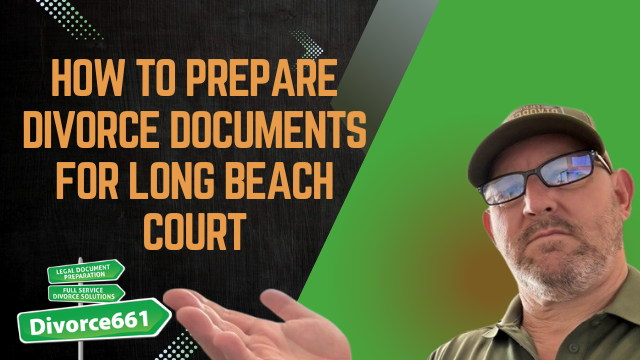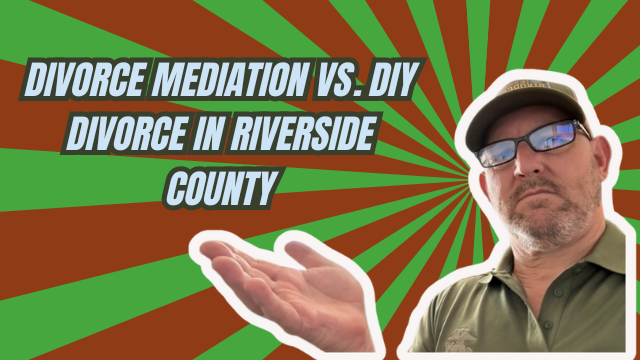How California Default Divorce Process Really Works
If you and your spouse are amicable and ready to divorce, the paperwork should be the simplest part. Yet many couples — and even some attorneys — discover that the California default divorce process is trickier than it looks. The main stumbling block is how a case is submitted to the court: a default with a written settlement agreement behaves very differently from a true default without an agreement.
Why seemingly “simple” divorces get stuck
One surprising fact: most paperwork isn’t closely reviewed by the court until you submit the judgment package for approval. You can file a petition and all the supporting documents, but the court will often only perform a substantive check when the judgment is presented. That’s when mistakes, missing agreements, or incorrect filing types get flagged and rejected — sometimes repeatedly — and the whole case can drag on for months.
Many couples try to DIY their divorce or hire a single attorney to handle only one side’s paperwork. If that paperwork is filed as a true default (a default without a signed settlement agreement), California law governs the outcome. Courts will insist on assessing and dividing community property and debts according to statute, which often means an equal 50/50 split unless there’s a signed agreement that says otherwise.
Default with agreement vs default without agreement
Default with agreement: Both spouses sign and notarize a written settlement agreement (also called a marital settlement agreement or stipulation). Submit this with your judgment package and the court usually approves on procedural grounds. This lets you divide assets and debts however you wish, waive or terminate spousal support by stipulation where legally permitted, and generally finalize the divorce quickly. In many amicable cases there are no court appearances at all.
Default without agreement (true default): One spouse does not participate or refuses to sign a settlement agreement. The court then applies California community property law to divide assets and debts. That means equal division unless the court finds a legal reason not to. The court may require hearings to evaluate asset values and other matters before approving the judgment, which adds time, cost, and uncertainty.
“If you submit a judgment saying she’s going to keep all her assets but he won’t sign an agreement, that will not get approved. The court will mandate it be divided.”
Why some attorneys file defaults without agreements
There are a few common reasons this happens:
- One attorney is hired only by one spouse to prepare paperwork and assumes filing as a default will be simpler.
- Firms may believe a true default avoids negotiating with the other party. In reality the court then steps in to enforce statutory division.
- Some providers advertise “we guarantee court approval” while only working with one spouse. That guarantee is unrealistic unless both parties participate or a signed settlement agreement is submitted.
Filing without an agreement can look like the easier path for the attorney, but it often creates extra work and delays for the parties — and higher bills when courts push back and require hearings or supplemental filings.
Real consequences: an example
Imagine a husband tells his wife he wants nothing and won’t sign anything. The wife submits a judgment claiming she keeps all assets. Because he did not sign an agreement, the court treats it as a true default. Even though he verbally said he didn’t want the assets, the court may still order a 50/50 split. Participation — not silence — changes the result.
Similarly, if spouses want to waive or terminate spousal support after a long marriage, California law often requires an express written agreement. You cannot terminate long-term spousal support unilaterally through a default judgment without the proper stipulation.
When no court appearance is needed
If both spouses agree on all terms, sign and notarize the settlement agreement, and the judgment package is prepared correctly, the case typically never reaches a judge’s courtroom. Clerks or judicial assistants who are authorized to approve judgments review the paperwork for procedural completeness. In many counties — including Los Angeles — electronic filing makes this process faster, and a correct judgment package can be approved in days.
When cases slow down
Court involvement increases when one spouse makes an official appearance and then disappears, or when there are disagreements about asset division, custody, or support. An appearance creates a procedural requirement that the court address contested issues, which can mean multiple hearings and long delays. The result: what should have been a simple amicable divorce turns into a year or more of litigation and court dates.
Practical recommendations
- Get a signed, notarized settlement agreement whenever possible. This converts a risky true default into a straightforward default with agreement and avoids statutory 50/50 results you may not want.
- Use a neutral professional or someone who works with both parties. When only one spouse’s paperwork is prepared, the other side’s participation is missing and the court will notice.
- Avoid true defaults when there are significant assets, debts, children, or long-term spousal support issues. True defaults are only appropriate for short marriages with no assets, debts, or children.
- Understand the judgment package is critical. Even if initial filings look fine, the judgment package is what the court reviews for approval.
- If a spouse refuses to sign, consider contesting or engaging counsel who will properly notify the court. Doing nothing often creates more procedural complications than actively contesting.
- Know the law on spousal support termination. For marriages over a decade, termination often requires an explicit agreement; you cannot rely on a default to end jurisdiction over support.
Bottom line
The single biggest difference in getting an amicable California divorce through the court quickly is whether you submit a properly drafted and signed settlement agreement with your judgment package. When both parties cooperate and the paperwork is correct, divorces can be finalized without a court appearance and in a matter of days or weeks. When the process relies on a true default without agreement, California law intervenes and the case becomes far more complicated.
Focus on clear agreements, correct paperwork, and neutral representation when possible. That is the fastest path to finalizing an amicable divorce and avoiding unnecessary delays, hearings, and expenses.










